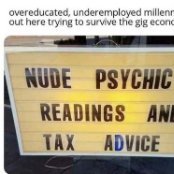The Creature From Jekyll Island
-
Recently Browsing 0 members
- No registered users viewing this page.
-
Topics
-
-
Popular Contributors
-
-
Latest posts...
-
58
Tourism Thailand Faces Drop in Tourist Arrivals Amidst Regional Rivalry
What leads to this in your opinion? Why prices are increasing, wihout providing good infrastructures ? -
4,414
LTR Visa is Now available for Long Term Residency
Thanks I completed the Document Request Acknowledgement Form and noted in my letter that I had not secured a flight yet but might be in later november. So far they haven't asked for insurance but only 1099r. I was sure they responded toy initial application so quickly...asking for those docs. -
81
Alert! Bangkok Bank new rule money seasoning
And on top of that, who's to say that all of them are using banked money method? Some will be using embassy letters, some will be using monthly transfers, some will be using agents, etc. -
1
UK Transgender paedophile used female name to breach a court order
I can't say what I think should be done. -
10
THAILAND LIVE Thailand Live Thursday 7 August 2025
Police Bust ‘Auto888vip’ Gambling, Seize 56 Million in Assets Picture courtesy of Daily News. The Cyber Crime Investigation Bureau (CCIB) has dismantled a major online gambling operation in Pathum Thani province, arresting a key suspect and seizing assets worth more than 56 million baht. Full story:https://aseannow.com/topic/1369013-police-bust-‘auto888vip’-gambling-seize-56-million-in-assets/ -
6
Thai Language - how long did it take you to read, write, listen and speak Thai well?
Reading and Writing Thai by Jintana Rattanakhemakorn, by Tuttle Publishing. I’d also recommend an Udemy course online … I think it’s called Learn Thai from an American Guy. The course notes are really excellent and he goes through each step very carefully. But at the end of it everything makes sense. It is in lectures of around 30 mins, and covers 7.5 hours of teaching. But that’s the beginning … now I have to start building up sentence structures and vocabulary.
-
-
Popular in The Pub









Recommended Posts